With its iconic monogram, superior craftsmanship, and high price tag, Louis Vuitton has long been synonymous with luxury and quality in the fashion industry. But have you ever wondered what goes into the making of a Louis Vuitton bag or what makes it worth its exorbitant price? In this article, we delve into the secrets behind the prestigious brand and uncover the fascinating world of luxury fashion.
From the meticulous selection of high-quality materials to the intricate hand-crafting process, each Louis Vuitton item is a testament to the brand’s unwavering commitment to excellence. We explore the brand’s rich heritage and the expert techniques that have been passed down through generations of skilled artisans. We also delve into the innovative approaches that Louis Vuitton has embraced to stay at the forefront of the ever-evolving fashion industry.
Join us as we demystify the allure of Louis Vuitton and gain a deeper understanding of the price you pay for owning a piece of true luxury. Whether you’re an avid fashion enthusiast or simply curious about the inner workings of a luxury brand, this article is your guide to unraveling the secrets behind Louis Vuitton’s unrivaled reputation.
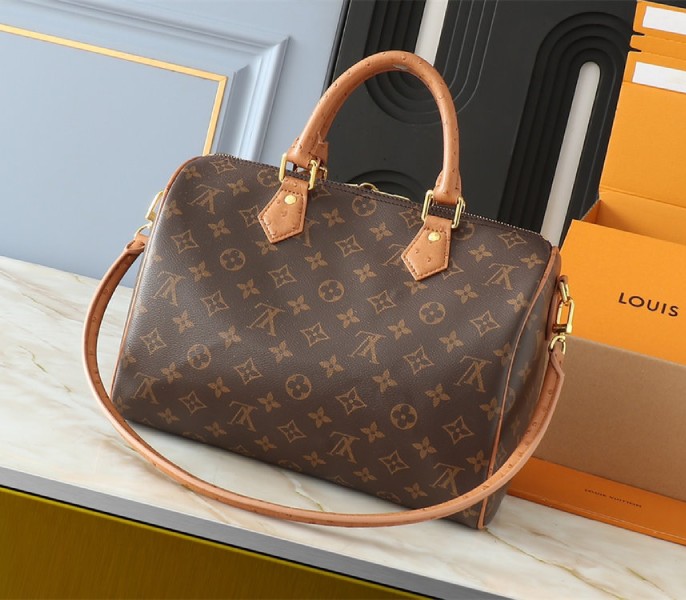
The history of Louis Vuitton
The story of Louis Vuitton begins in 1821 when Louis Vuitton was born in Anchay, a small village in eastern France. At the age of 14, he made a bold decision to leave his hometown and head to Paris, where he trained as a box-maker and packer. This apprenticeship was pivotal, as it exposed him to the art of crafting high-quality, durable travel trunks. During the mid-19th century, the rise of train travel in Europe created a booming demand for reliable luggage, and Vuitton seized this opportunity to position himself as a leader in the industry. By 1854, he opened his first boutique in Paris, which marked the official beginning of the Louis Vuitton brand.
Vuitton’s innovative designs quickly gained popularity, particularly his flat-topped trunks which were not only functional but also stylish. Unlike the bulky and cumbersome trunks of the time, his designs were lightweight and could be easily stacked. This innovation captured the attention of the elite and established Vuitton as a luxury brand. The introduction of the iconic monogram canvas in 1896, designed by his son Georges Vuitton, further solidified the brand’s identity and protected against counterfeiting, ensuring that Louis Vuitton products were instantly recognizable.
Throughout the years, Louis Vuitton has continued to evolve, adapting to changing consumer preferences and fashion trends. The company expanded its offerings to include handbags, accessories, and ready-to-wear clothing, all while maintaining its commitment to craftsmanship and quality. In the 20th century, the brand became a symbol of wealth and status, embraced by celebrities and influencers alike. Today, Louis Vuitton is not just a brand; it is a cultural phenomenon that represents the intersection of art, fashion, and luxury.
The craftsmanship behind Louis Vuitton products
Craftsmanship is at the heart of Louis Vuitton’s identity, and it is what sets the brand apart in the luxury fashion industry. Each product is meticulously handcrafted by skilled artisans, many of whom have undergone extensive training and have years of experience. The brand prides itself on its artisanal techniques, which have been passed down through generations, ensuring that every piece not only meets but exceeds the highest standards of quality. The dedication to craftsmanship is evident in the attention to detail, from the stitching to the finishing touches.
The process of creating a Louis Vuitton product begins with a design concept, which is then transformed into a prototype. Artisans use traditional methods, such as hand-stitching and leather crafting, to bring these designs to life. Each item requires significant time and precision, often taking hours, if not days, to complete. For instance, the iconic Speedy bag involves over 30 different steps, each requiring the expertise of a craftsman. The patience and skill involved in crafting these pieces ensure that they are not just bags, but works of art.
Moreover, Louis Vuitton places a strong emphasis on continuous training and skill development for its artisans. The brand invests in workshops and programs to refine their techniques, ensuring that they remain at the forefront of luxury craftsmanship. This commitment to excellence is reflected in the durability and longevity of their products, making them a worthwhile investment for consumers. Louis Vuitton’s artisans are not just creators; they are custodians of a rich heritage that values quality and artistry above all else.
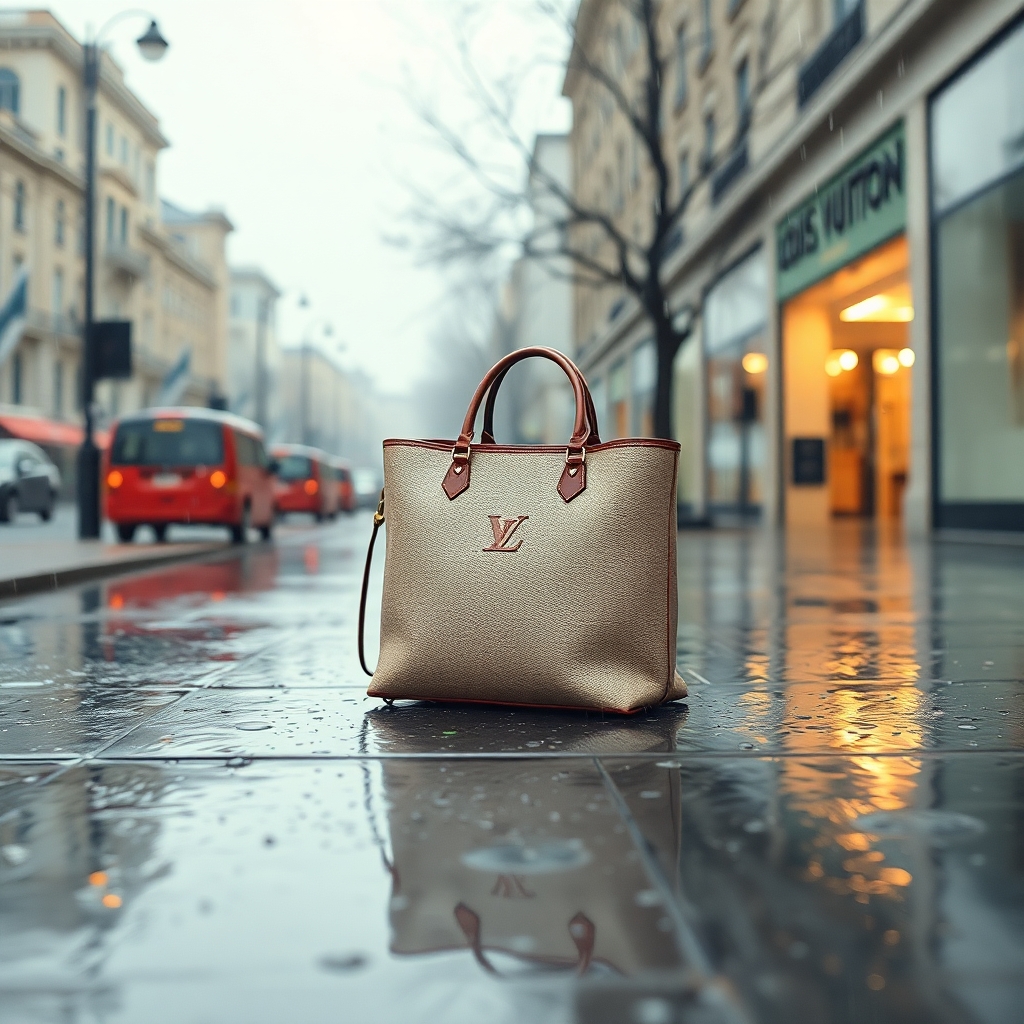
The materials used in Louis Vuitton products
The quality of materials used in Louis Vuitton products is a critical factor that contributes to the brand’s luxurious reputation. Louis Vuitton sources only the finest materials, whether it be leather, canvas, or hardware. The signature Monogram canvas, for instance, is made from a coated canvas that is both lightweight and water-resistant, providing durability without compromising style. This unique blend of cotton and polyester gives the canvas its distinctive look while ensuring it withstands the wear and tear of daily use.
When it comes to leather, Louis Vuitton opts for premium hides, including Epi leather, Taurillon leather, and Monogram Empreinte leather, each offering unique textures and finishes. The selection process for these materials is rigorous, with strict standards to ensure that only the best quality hides are used. The tanning process is also crucial; Louis Vuitton employs both traditional and modern techniques to ensure that the leather remains supple and retains its color over time. This meticulous attention to material selection guarantees that every Louis Vuitton item exudes an air of sophistication and luxury.
Additionally, the brand pays close attention to the hardware used in its products. Zippers, buckles, and clasps are made from high-quality metals that are designed to be both functional and aesthetically pleasing. Louis Vuitton often employs techniques like polishing and plating to ensure that the hardware maintains its shine and resists tarnishing. The combination of these exceptional materials not only enhances the visual appeal of the products but also guarantees that they will last for years, if not decades. This commitment to using the finest materials is a cornerstone of Louis Vuitton’s philosophy

Quality control and authentication process
Louis Vuitton takes quality control very seriously, ensuring that every item that leaves its workshops meets the brand’s exacting standards. The quality control process begins at the earliest stages of production, where materials are inspected for flaws before they are used. Skilled technicians examine each piece for any imperfections, and only those that meet the brand’s high standards are approved for further crafting. This rigorous process is essential to maintaining the integrity of the brand and ensuring that customers receive products that are flawless in both design and workmanship.
Once a product is completed, it undergoes a final inspection before it is packaged and shipped. This inspection process involves checking every detail, from stitching and seams to hardware functionality. Each item is carefully evaluated by quality control experts who have an eye for detail and a deep understanding of Louis Vuitton’s standards. If any discrepancies are found, the item is sent back for rework, ensuring that only the highest quality products reach consumers. This commitment to quality control has helped Louis Vuitton build a reputation for excellence in the luxury market.
In addition to maintaining high standards in production, Louis Vuitton also places great importance on authentication to combat counterfeit products. The brand employs various methods to ensure that genuine Louis Vuitton items are easily identifiable. Each product comes with specific identifiers, such as unique serial numbers, date codes, and distinctive features that are difficult to replicate. Louis Vuitton also invests in technology to track and authenticate its products, ensuring that consumers can confidently invest in their luxury items. This rigorous authentication process reinforces the brand’s commitment to quality and helps protect the integrity of its image in the competitive world of luxury fashion.
The pricing strategy of Louis Vuitton
Louis Vuitton’s pricing strategy is a critical element of its brand identity, reflecting its status as a luxury brand. The company adopts a premium pricing model, which positions its products at the higher end of the market. This strategy is not merely about the price tag but is deeply tied to the perceived value of the brand. By maintaining high prices, Louis Vuitton reinforces the exclusivity and desirability of its products, making them symbols of wealth and success. Consumers are often willing to pay a premium for Louis Vuitton not only for the quality but also for the status that comes with owning a piece from the brand.
One of the key components of Louis Vuitton’s pricing strategy is its limited distribution. The brand strategically controls its retail presence, choosing to sell its products only in select locations and through its own boutiques. This exclusivity creates a sense of scarcity around its items, further justifying their high prices. Additionally, Louis Vuitton avoids discounting its products, ensuring that their value remains intact. This approach helps maintain the brand’s prestige and allows it to uphold the perception of luxury that consumers expect.
Moreover, the pricing of Louis Vuitton products reflects the craftsmanship and quality that goes into each item. The hours of handwork, the premium materials, and the skilled artisanship all contribute to the final price. Consumers are not just buying a product; they are investing in a piece of art that represents a rich heritage and a commitment to excellence. Louis Vuitton’s pricing strategy, therefore, is not merely about profit margins; it is about creating an aura of luxury and exclusivity around its brand that resonates deeply with its clientele.
The exclusivity and brand image of Louis Vuitton
Exclusivity is a cornerstone of Louis Vuitton’s brand image, and it plays a significant role in its appeal to consumers. The brand has cultivated an image of luxury and sophistication, which is primarily achieved through selective marketing and limited product releases. By producing items in limited quantities and focusing on high-quality craftsmanship, Louis Vuitton ensures that its products remain desirable and sought after. This exclusivity creates a sense of urgency among consumers, who are eager to own a piece of the brand, knowing that it is not just available to anyone.
Furthermore, Louis Vuitton collaborates with renowned artists, designers, and celebrities to enhance its brand image. These collaborations often yield limited-edition pieces that attract attention and elevate the brand’s status in the fashion world. For instance, partnerships with influential figures like Takashi Murakami and Jeff Koons have produced unique collections that blend art and fashion, appealing to both collectors and fashion enthusiasts alike. These strategic collaborations keep the brand fresh and relevant while reinforcing its image as a leader in luxury.
The brand’s marketing strategy also plays a vital role in shaping its image. Louis Vuitton invests heavily in high-profile advertising campaigns that feature well-known models and celebrities, further enhancing its allure. The use of aspirational imagery and storytelling in its marketing helps consumers connect emotionally with the brand. The result is a powerful brand image that signifies not just luxury but also a lifestyle that many aspire to. This carefully crafted image of exclusivity ensures that Louis Vuitton remains a coveted brand in the competitive landscape of luxury fashion.
Alternatives to Louis Vuitton
While Louis Vuitton is synonymous with luxury, there are several alternatives that offer similar quality and style without the hefty price tag. Brands like Gucci, Prada, and Chanel also provide high-end fashion products that appeal to consumers seeking luxury. These brands have their unique aesthetics and history, often featuring distinctive logos and signature designs that rival Louis Vuitton’s iconic monogram. For instance, Gucci’s bold patterns and vibrant colors attract a different type of luxury consumer who values a more eclectic style, while Chanel’s classic elegance appeals to those who appreciate timeless fashion.
In addition to these established luxury brands, there are also emerging names in the fashion industry that offer high-quality craftsmanship at a relatively lower price point. Brands like Tumi and Mansur Gavriel focus on minimalist designs and premium materials, catering to consumers who prefer understated luxury. These alternatives are gaining traction among fashion enthusiasts who are looking for unique pieces that stand out without the overwhelming brand presence associated with Louis Vuitton. This shift highlights a growing trend in the luxury market where consumers are more open to exploring new brands that offer sophistication and quality.
Moreover, the rise of sustainable fashion has led to the emergence of brands that prioritize ethical production methods and eco-friendly materials. Brands like Stella McCartney and Reformation not only provide high-quality products but also appeal to consumers who are conscious of their environmental impact. This trend towards sustainability presents an exciting alternative to traditional luxury brands, including Louis Vuitton, appealing to a new generation of consumers who value both luxury and responsibility in their fashion choices.
Why choose replica louis vuitton?
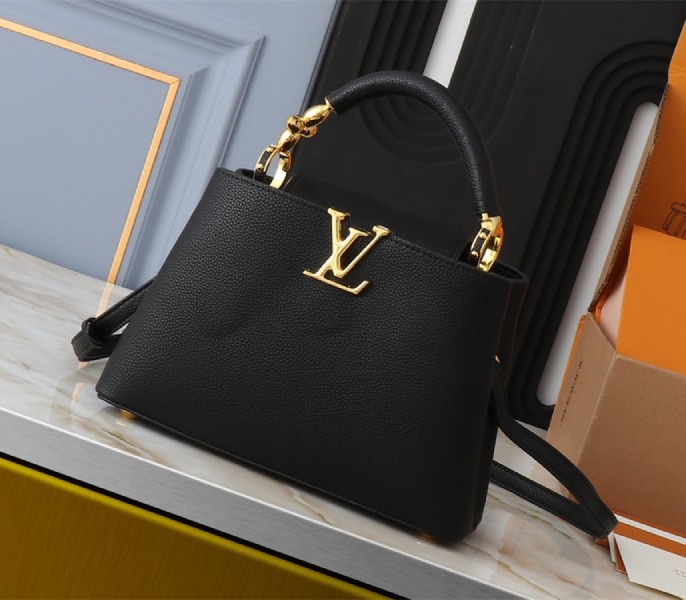
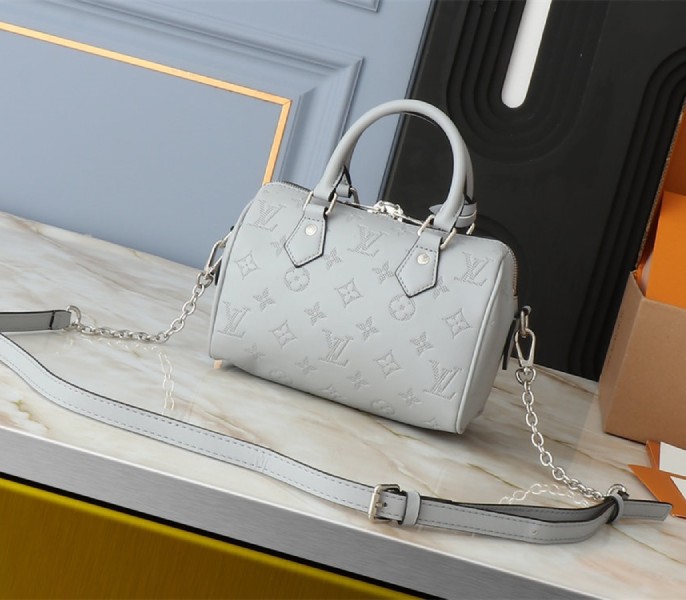
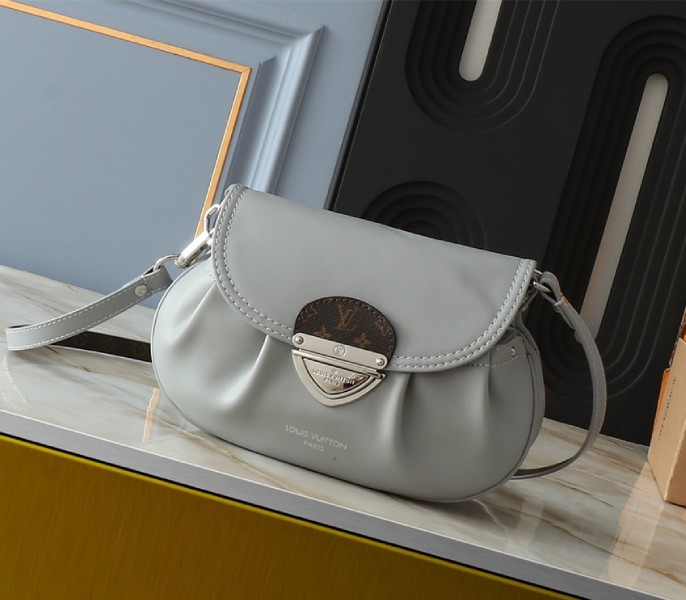
Why Louis Vuitton is so expensive?
Replica Louis Vuitton offers near-authentic quality at an affordable price, satisfying the pursuit of fashion and high-end design while significantly reducing the financial burden.
2.Highly reproducible: details are virtually indistinguishable from the genuine article
With the help of exquisite craftsmanship and modern technology, the replicas are highly reproducible in terms of material, detailing and design, allowing you to enjoy a sense of luxury that is close to the genuine article.
3.Flexibility to experiment: freedom to choose from a variety of styles
The replica collection is diverse, allowing you to easily try different styles without hesitation or worry about the high investment.
4.Peace of Mind: Reducing Economic Stress and Psychological Burden
Use replicas without worrying about daily wear and tear or accidental damage, and easily enjoy the convenience and sense of style that comes with luxury design.
5.Image enhancement: fashionable choices for social occasions
Exquisite replicas are ideal for social occasions, helping you to quickly enhance your personal image and temperament and show your unique taste.
6.Design and quality at the same time: classic reproduction, practicality at its best
Replicas ensure a high-quality experience of materials and craftsmanship while combining the design aesthetics of the original, making them a balanced choice for everyday practicality and a sense of luxury.
Conclusion: The enduring appeal of Louis Vuitton
The enduring appeal of Louis Vuitton lies in its rich heritage, unparalleled craftsmanship, and commitment to quality. Since its inception, the brand has consistently embraced innovation while staying true to its roots, creating products that resonate with consumers across generations. The iconic monogram and signature designs are instantly recognizable, symbolizing luxury and exclusivity in a world where trends come and go. This ability to maintain relevance while honoring tradition is a testament to Louis Vuitton’s status as a leader in the luxury fashion industry.
Moreover, the brand’s focus on quality and authenticity has fostered a loyal customer base that values not just the products, but the stories and craftsmanship behind them. Louis Vuitton’s dedication to its artisans and the meticulous attention to detail in every piece create a sense of connection between the brand and its consumers. This emotional bond plays a significant role in the brand’s lasting appeal, as customers feel they are not just purchasing a product, but investing in a legacy of luxury.
As the fashion landscape continues to evolve, Louis Vuitton remains a benchmark for luxury, setting standards that others aspire to achieve. The brand’s ability to adapt to changing consumer preferences while retaining its core values ensures that it will continue to thrive in the competitive world of luxury fashion. For those who appreciate the artistry and heritage of luxury, Louis Vuitton will always hold a special place, symbolizing the ultimate expression of sophistication and elegance.
